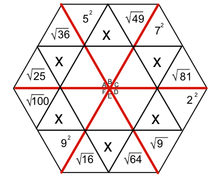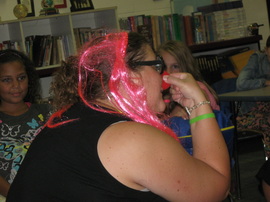
Students love to do these hexagons. During this time, students are successful, not only when they correctly solve a problem, but when they identify the mistakes that caused them to get a problem wrong. Done in a safe way, this identification of mistakes allows students to support and receive support from their peers. They help solve the issues, applaud success, and encourage each other - all as a part of a multifaceted process we have embedded into our class.
Finally, the same hexagons may also be adapted for negative integers, fractions, and decimals.
An exponent is that little flying number behind a regular-sized number.
A four with a number two flying behind it is read as "four squared" or "four to the second power". When we see this, we think, 4 x 4.
When we see a four with a three flying behind it, we think, 4 x 4 x 4.
A square root is very much the opposite of a square number.
When we spot the square root of 36, we think, "what number times itself equals 36".

















































































